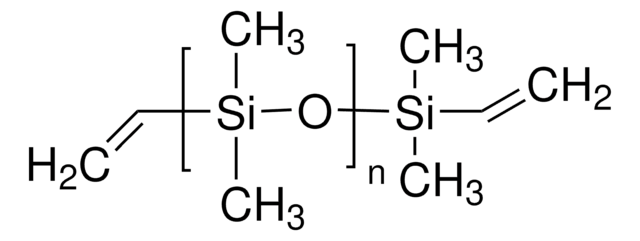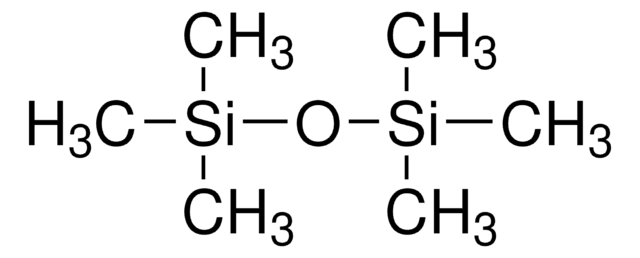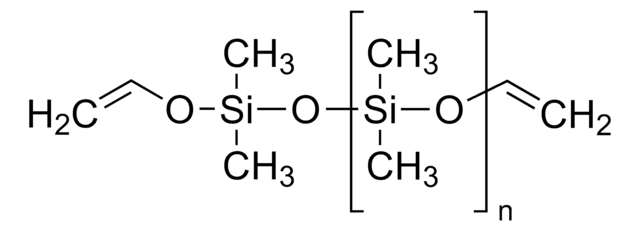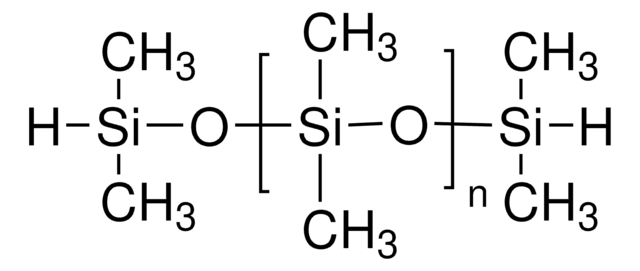469319
Poly(dimethylsiloxan)
viscosity 1.0 cSt (25 °C)
Synonym(e):
Octamethyltrisiloxan
About This Item
Empfohlene Produkte
Dampfdichte
>1 (vs air)
Qualitätsniveau
Brechungsindex
n20/D 1.384 (lit.)
Viskosität
1.0 cSt(25 °C)
bp
153 °C (lit.)
mp (Schmelzpunkt)
−82 °C (lit.)
Dichte
0.82 g/mL at 25 °C (lit.)
SMILES String
C[Si](C)(C)O[Si](C)(C)O[Si](C)(C)C
InChI
1S/C8H24O2Si3/c1-11(2,3)9-13(7,8)10-12(4,5)6/h1-8H3
InChIKey
CXQXSVUQTKDNFP-UHFFFAOYSA-N
Suchen Sie nach ähnlichen Produkten? Aufrufen Leitfaden zum Produktvergleich
Allgemeine Beschreibung
Anwendung
Signalwort
Warning
H-Sätze
Gefahreneinstufungen
Flam. Liq. 3
Lagerklassenschlüssel
3 - Flammable liquids
WGK
WGK 3
Flammpunkt (°F)
84.2 °F - (External MSDS)
Flammpunkt (°C)
29 °C - (External MSDS)
Persönliche Schutzausrüstung
Eyeshields, Faceshields, Gloves, type ABEK (EN14387) respirator filter
Hier finden Sie alle aktuellen Versionen:
Besitzen Sie dieses Produkt bereits?
In der Dokumentenbibliothek finden Sie die Dokumentation zu den Produkten, die Sie kürzlich erworben haben.
Kunden haben sich ebenfalls angesehen
Artikel
Dr. Tan and researcher introduce recent trends in Self-healing Soft Electronic Materials and Devices. The emergence of smart, functional SHPs will be highly beneficial to the advancement of the next-generation self-healing soft electronic devices. Autonomously self-healing devices could help to minimize the need for repair or replacement of electronics and machines, potentially reducing the cost of materials and reducing electronic waste.
Advances in the area of soft optoelectronics, with a focus on the development of organic optoelectronic devices on shape memory polymers (SMP) is discussed.
Unser Team von Wissenschaftlern verfügt über Erfahrung in allen Forschungsbereichen einschließlich Life Science, Materialwissenschaften, chemischer Synthese, Chromatographie, Analytik und vielen mehr..
Setzen Sie sich mit dem technischen Dienst in Verbindung.









